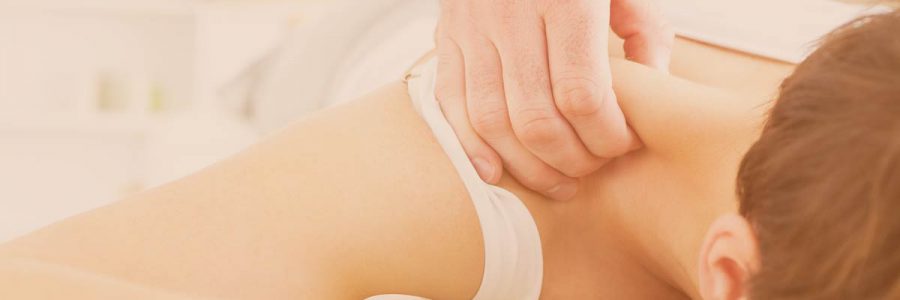
If you’re considering going to school to become a massage therapist, you may be as excited as you are worried. Whether massage therapy would be your first experience in a full-time job or a career change after already being in the workplace, going to school for a new skill and profession can be daunting.
But it doesn’t have to be! With a little information on your side, you can feel comfortable and even enthusiastic as you embark on this new adventure. Here are three tips on how to succeed in massage therapy school—and to be happy while doing so.
- Commit to the goal of graduation. Before you even sign up for your first class or attend your first lecture, you should decide that this is what you want to do. After that decision has been made, you will find the energy and focus that it takes to accomplish your goal. It’s just like your parents (or grandparents) always told you: “Where there’s a will, there’s a way.” If you want to achieve the goal of becoming a licensed massage therapist and actually believe that you can do it, then you will, whether it takes six months, a year, or more.
- Find a study partner or group. In massage therapy school, you’ll likely be learning about the human body in more detail than you ever have before. And when it comes to memorizing huge lists of terms in anatomy or studying a bunch of new vocabulary, having a study partner makes all the difference. Even if you think you study better alone, it’s still wise to find a fellow student or two and exchange contact information. You never know when a copy of someone else’s notes will come in handy or when you’ll need help with an assignment. Plus, when you’re in massage therapy school, it’s always nice to have a buddy to give your shoulders a nice rub when you’re feeling stressed!
- Take time for self-care. Just like an airline flight attendant will tell you to secure your own oxygen mask before helping anyone else, you’ve got to take care of your own body and mind before you’ll be able to help anyone else through a career in massage therapy. This applies to your time in massage therapy school as well; you won’t be able to fully apply yourself and focus on your coursework if you haven’t taken care of yourself first. This self-care might come in the form of meditation, scheduled time off from schoolwork, time to prepare a healthy meal, or alone time to just decompress and watch a favorite show. Whatever it is, set aside the time to do it and honor that commitment to yourself.
If you can mentally commit to massage therapy school, find a support group in your classes, and make time to take care of yourself while you do it, you’ll be prepared to succeed not only in school but in your career in massage therapy as well. And as you undertake this new journey into massage therapy school and beyond, you can feel confident that your career choice will help other people as much as it helps you.
Click here for more information about attending Seattle Massage School
8 Ways to Reduce Holiday Stress
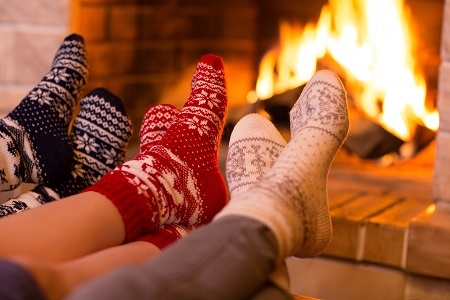 The biggest irony of the holiday season is that it invariably causes a lot of people a great deal of stress. The exact source of a given person’s yuletide tension can vary indefinitely, but three major circumstances are regular culprits: gift shopping, economic situation and family problems. Luckily, there exists a tried and tested list of easy ways to reduce holiday stress. These simple self-care practices work wonders for almost any source of holiday tension, also, mixing and matching them could prove to turn you into a walking source of calm and positivity.
The biggest irony of the holiday season is that it invariably causes a lot of people a great deal of stress. The exact source of a given person’s yuletide tension can vary indefinitely, but three major circumstances are regular culprits: gift shopping, economic situation and family problems. Luckily, there exists a tried and tested list of easy ways to reduce holiday stress. These simple self-care practices work wonders for almost any source of holiday tension, also, mixing and matching them could prove to turn you into a walking source of calm and positivity.
Experience the Holidays with Calm and Ease
These self-care tips may sound like common sense but for the fact that they are all too commonly overlooked. This is due in part because it’s easy to get distracted from your physical and mental condition by so much external media and situational concerns. Add to the regular worries of life the production of a successful American holiday season and you have the potential for an epic nervous breakdown. So just avoid all of that ugliness and follow these holiday life hacks.
- Do Not Overeat during the holidays because doing so will slow you down, create an imbalance in the function of your internal organs, reinforce the neural connection between ingestion and happiness and make you look like a hog at parties. Impose meal size limitations for yourself and stick to them.
- Stretching is a surefire way of reducing tension and instantly feeling better. Stretching will help you withstand standing in line at the register and the constant travel of the holidays by keeping your muscles relaxed and mind focused.
- Take a Moment to Breathe Deeply every day as this is a crucial aspect of staying balanced and relaxed. Breathing deeply is of critical importance during stretching and exercise and will help you both physically and mentally. Your body runs on oxygen remember, it is indispensable to feeling good.
- Massage Therapy is perhaps the ideal way of reducing holiday stress. A good massage therapist can identify and target tension points throughout your body. Both the quietude of a massage parlor and the physical contact of the therapist work to create a calming environment and experience that works miracles through stressful times.
- Exercise will help you channel holiday tension, enhance your metabolic functions and help you keep a focused mind, the perfect recipe for surviving the holidays.
- Shop Light if your financial situation is not great. Worrying about giving enough while still making ends meet is one of the biggest causes of holiday stress. In the words of Mother Teresa, “It’s not how much we give but how much love we put into giving.”
- Get Some “You” Time by walking through a park or scheduling a lunch date with yourself. Introspection is a key part of self-care, eliminating stress and organizing your priorities.
- Invest in Your Future instead of spending a lot of money on holiday frivolities. Taking the first step towards learning a trade or craft is a great way to add positivity to difficult times. Analyze your holiday expenditure, note where you can cut back and use it to start creating a better you.
Sure the holiday season has become synonymous with consumer madness, fiscal anxiety and family disputes, but that doesn’t mean any of it has to affect you negatively. Stay conscious of your physical health and focused on top priorities and all of stress should slide off of you effortlessly. Implement these tips year round and by the next winter you’ll be a seasoned vet in stress-free holidays.
Click Here: For more information about massage therapy or attending massage school.
8 Reasons Massage School is Worth the Financial Investment
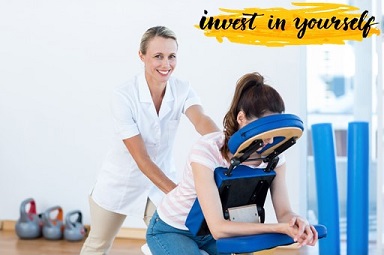
Becoming a massage therapist is a wonderful career path to follow. It is a skill you can carry with you anywhere you go. Here are 8 reasons why attending massage school is worth the financial investment.
- It’s a skill you can take with you anywhere you go. Though you may have to update your license depending on where life takes you, you will always be able to take this skill with you on the road. You can work for a massage franchise company, start your own practice or go on the road with a professional athletic team. You can even work with a cruise line and see the world.
- People love massage. Massage is often seen as a luxury, but more and more people are realizing the many health benefits that come with massage. From helping with insomnia, relieving stress and preventing and treating injuries, massage has become a perfect tool for helping people live healthier lives.
- You learn more about yourself. Massage isn’t just for helping others, it can help you learn more about yourself. Like how you handle stressful situations and what your boundaries are.
- Massage school is a great stepping stone. If you are just graduating high school or looking to transition careers, massage school is a great stepping stone for that. It pays more than your regular retail job making it ideal for a student needing to make their way to college.
- Set your own schedule. Once you graduate, setting your own schedule is fairly simple. Most massage clinics are open seven days a week. If you open your own practice, your schedule is up to you.
- Flexibility. Most massage schools have several programs to choose from. You can attend part-time or full time. You can also pick between daytime classes, evening or weekend.
- Endless opportunity to further improve yourself. Once you have your license, you have to keep it up to date and attend continuing education courses which means you get to learn more! There are always fascinating topics to pick from including aromatherapy, prenatal and infant massage as well as sports massage therapy. There are even courses in equine and canine massage!
- You can help others. Going to massage school will lead you to a path to become or enhance your nurturing skills. It’s a great way to help others live healthier lives.
What are you waiting for?
Click here: For more information bout our Massage School Programs
Click on your massage school of interest below:
Seattle Masage School | Tacoma Massage School | Bellingham Massage School
![]()
Infant Massage: Nurturing the Emotional and Physical Connection
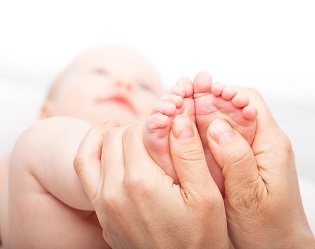 As widespread understanding of the benefits of massage therapy become commonplace, the art and science of the craft are furthered and more uncommon aspects of it are explored. Infant massage is one such branch of massage therapy that has garnered positive criticism for its multi-beneficial effect. Not only does massage therapy help to calm an infant, it serves to strengthen the child’s humanistic tendencies and also aids in healthy adolescent development. The full scientific consensus on infant massage is still pending a lot of analysis and research, but that’s not stopping practitioners and mothers alike from boasting its effectiveness.
As widespread understanding of the benefits of massage therapy become commonplace, the art and science of the craft are furthered and more uncommon aspects of it are explored. Infant massage is one such branch of massage therapy that has garnered positive criticism for its multi-beneficial effect. Not only does massage therapy help to calm an infant, it serves to strengthen the child’s humanistic tendencies and also aids in healthy adolescent development. The full scientific consensus on infant massage is still pending a lot of analysis and research, but that’s not stopping practitioners and mothers alike from boasting its effectiveness.
Understanding Infant Massage
The anatomy of an infant and the ailments for which they might need massage therapy vary greatly from that of an adult. A seasoned athlete who may need massage work for sore or tense muscles is going to require a vastly augmented amount of force and precise physical targeting, as where the key for infant massage is soft and gentle.
- The Technique necessary for a safe and effective practice of infant massage requires consideration and at least some training. An infant’s anatomy is much more underdeveloped than an adult, therefore, errors such as the application of too much force could have a negative effect on the child’s physical development. Investing in a massage therapy course before attempting infant massage is crucial to developing a good technique with a solid foundation. Massage therapy for an infant requires paying close attention to how the baby reacts, this will tell you if they find your current technique painful or uncomfortable. Further concentration into the specifics of infant massage is now possible due to its popularity.
- The Benefits of infant massage are both immediate and long-term. The soothing touch can calm and relax babies, and also aid in putting them to sleep. A massage can help reduce crying and invariably creates a significant and important bond between the infant and others, most importantly the child’s mother and father. A long-term benefit of infant massage is that it can help maintain a healthy balance of the infant’s stress control hormones (according to the Mayo Clinic.) As with any infant care practice, if the massage is not performed correctly it could be detrimental. For example, massaging an infant too soon after eating can cause the baby to vomit.
Infant massage therapists benefit from a growing career that is heavily lauded for its positive effect on others. An investment in an education in massage therapy will prepare you embark on this field, and as the practice of, and interest in, infant massage therapy continues to grow so do the job opportunities. Whether it be for personal use with your own family or as a prospective career the time to act is now.
Click Here: For more information about infant massage in seattle massage schools
![]()
Hands on Learning in Massage School: Training the Brain Through Touch
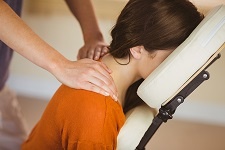 Have you been looking for a career where you can work independently and make a good living – as well as help people feel their best? If the answer is yes, then attending a massage school may lead you to the career you will be proud of.
Have you been looking for a career where you can work independently and make a good living – as well as help people feel their best? If the answer is yes, then attending a massage school may lead you to the career you will be proud of.
Learning styles in massage school
What is your learning style? Do you do best in a classroom setting where the instructor gives lectures? Do you learn best by using charts, videos or other visuals? Or, are you able to retain more information if you are participating in activities that help the information to sink in?
- Lecture
- Visual
- Kinesthetic (hands-on)
Lecture
Do your eyes glaze over and your mind wanders during long lectures? If the answer to that is yes, you aren’t alone. You try to pay attention, but once the lecture is over you realize you haven’t retained what you should have. A large majority of classrooms use the lecture-based type of teaching.
While some lecture in the classroom is necessary, studies have shown that during a lecture, the instructor usually says about 100-200 words a minute. Out of these, the typical student hears only about half. Add a wandering mind to the equation, and comprehension during lectures is an ineffective way to teach – and to learn.
Visual learner
If you learn best by using visual aides, you probably have found methods that help you organize and retain information. There are many great visual learning tools used in massage therapy school. Anatomy charts, muscle maps and models compliment a student that does best with a visual learning style.
Kinesthetic learner
Many people learn best when they are engaged in activities – watching and performing the task that is being taught. Those who prefer the kinesthetic learning style may find it difficult to sit through a lecture, and retain very little of what is shared.
Kinesthetic learners like to get in and do it! If this physical and hands-on style of learning is more like you, you may find massage therapy school right up your alley. Since massage therapy is a hands-on field of study, most students who are interested in massage school are kinesthetic learners. When you attend a massage therapy school, you will experience a lot of hands-on activity – both by learning to do massage, and by receiving massages from your fellow massage therapy school students.
Massage school typically integrates all of the learning styles in ways that will lead you to a successful career in massage therapy.
Click Here: For more information about learning styles used at seattle massage schools
![]()
Steps for Passing Your Massage Therapy Board Exam
 The massage board exam (FSMTB MBLEx), is designed to ascertain expertise in massage therapy. It is broken into 8 categories: client assessment and treatment; benefits and affects of techniques; pathologies, contraindications and cautions; history of massage; laws, ethics, boundaries and regulations; professional practice; kinesiology; and anatomy and physiology. It is 125 multiple-choice questions and your will have 2.5 hours to take it. On a scale from 300 to 900, you will need to score a 630 to gain board certification.
The massage board exam (FSMTB MBLEx), is designed to ascertain expertise in massage therapy. It is broken into 8 categories: client assessment and treatment; benefits and affects of techniques; pathologies, contraindications and cautions; history of massage; laws, ethics, boundaries and regulations; professional practice; kinesiology; and anatomy and physiology. It is 125 multiple-choice questions and your will have 2.5 hours to take it. On a scale from 300 to 900, you will need to score a 630 to gain board certification.
In terms of content, you will have already learned everything you need in massage school to pass the exam. This does not, of course, mean that you remember it all, which is where additional preparation comes in. A guide to the content of the exam, including the percentage devoted to each section, is available from the FSMTB here. Use this as a baseline, but tailor your focus to your own predispositions. Areas you feel stronger in will require less study, and vice versa.
Start well in advance – in other words, don’t cram. Cramming is not good test preparation. It increases nervous tension and does not establish the material firmly in your long-term memory. Study for an hour a day for 1-2 months in advance of the exam. Find a calm, quiet space, set a timer, and don’t pressure yourself to go beyond the allotted 60 minutes. Use a study guide (there are several available), and work methodically and thoroughly through the material.
In the last week, do a full review of the all of the categories, concentrating on those you’re least sure of. Eat healthy, balanced meals, exercise moderately and get full-nights of sleep. Foods high in B vitamins will help with concentration.
When it comes to the test itself, read each question carefully, make sure you fully understand it, then answer. If you’re not sure of an answer, leave it blank, move on and return to it when you’ve completed all of the questions you know. For these remaining questions, read for categoricals: ie, “always,” “never,” “everything,” “nothing” – these can rule many choices out. And keep in mind that 2 of the 4 choices can usually be ruled out easily. Of the remaining 2, make the choice that seems most correct.
Following these simple practices and techniques will make the board exam less stressful and lead to better results. Good luck and study hard!






